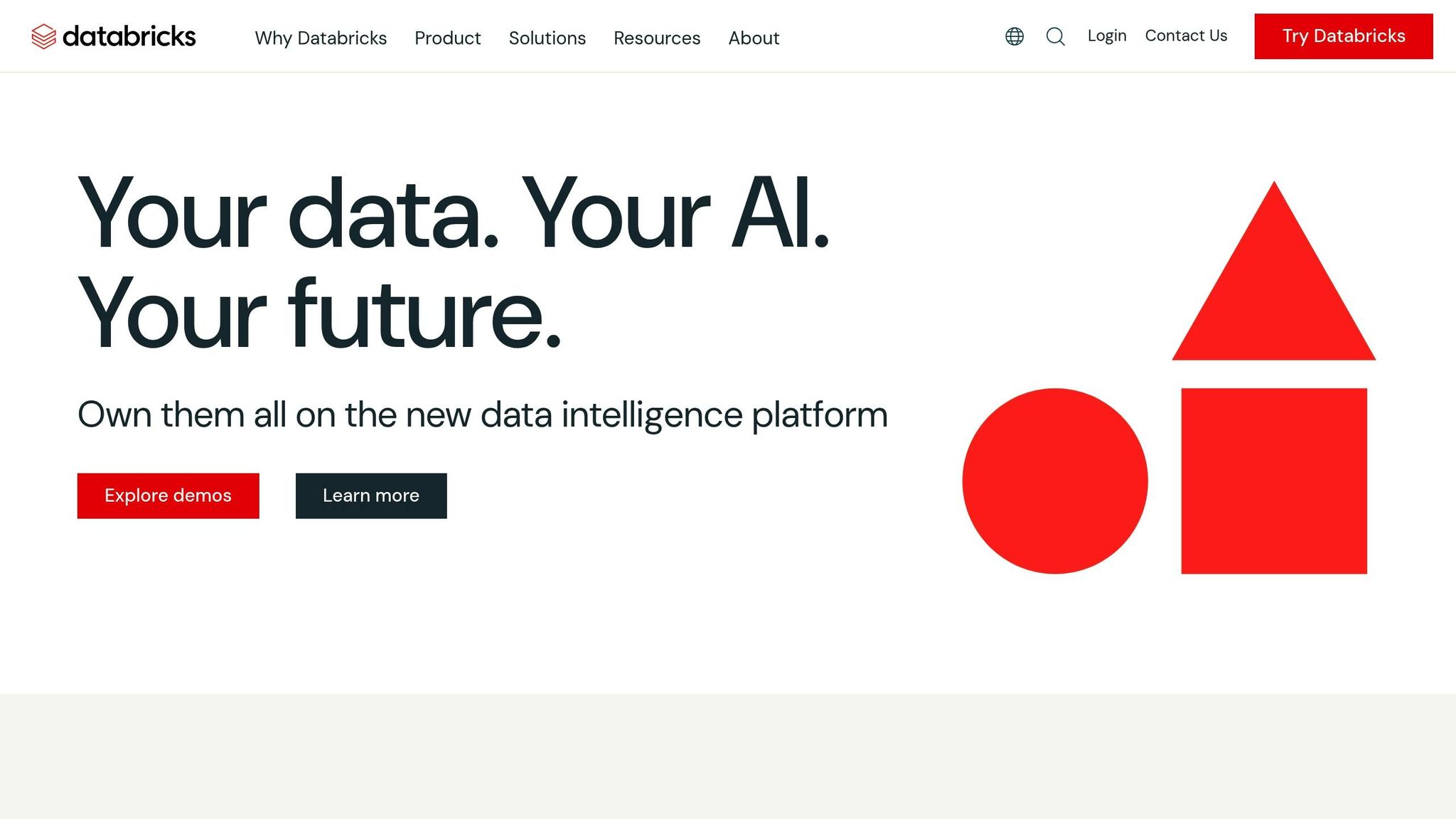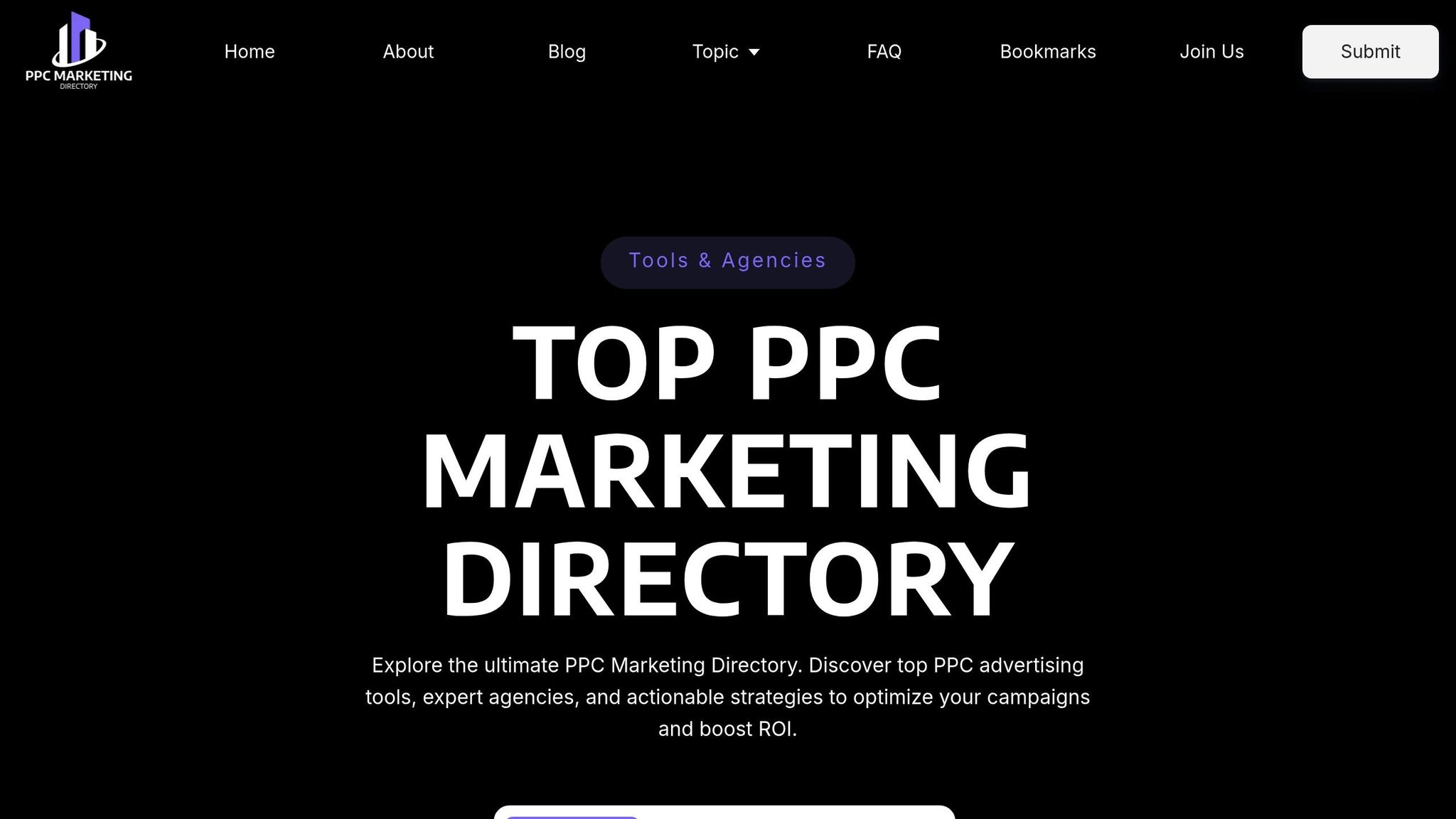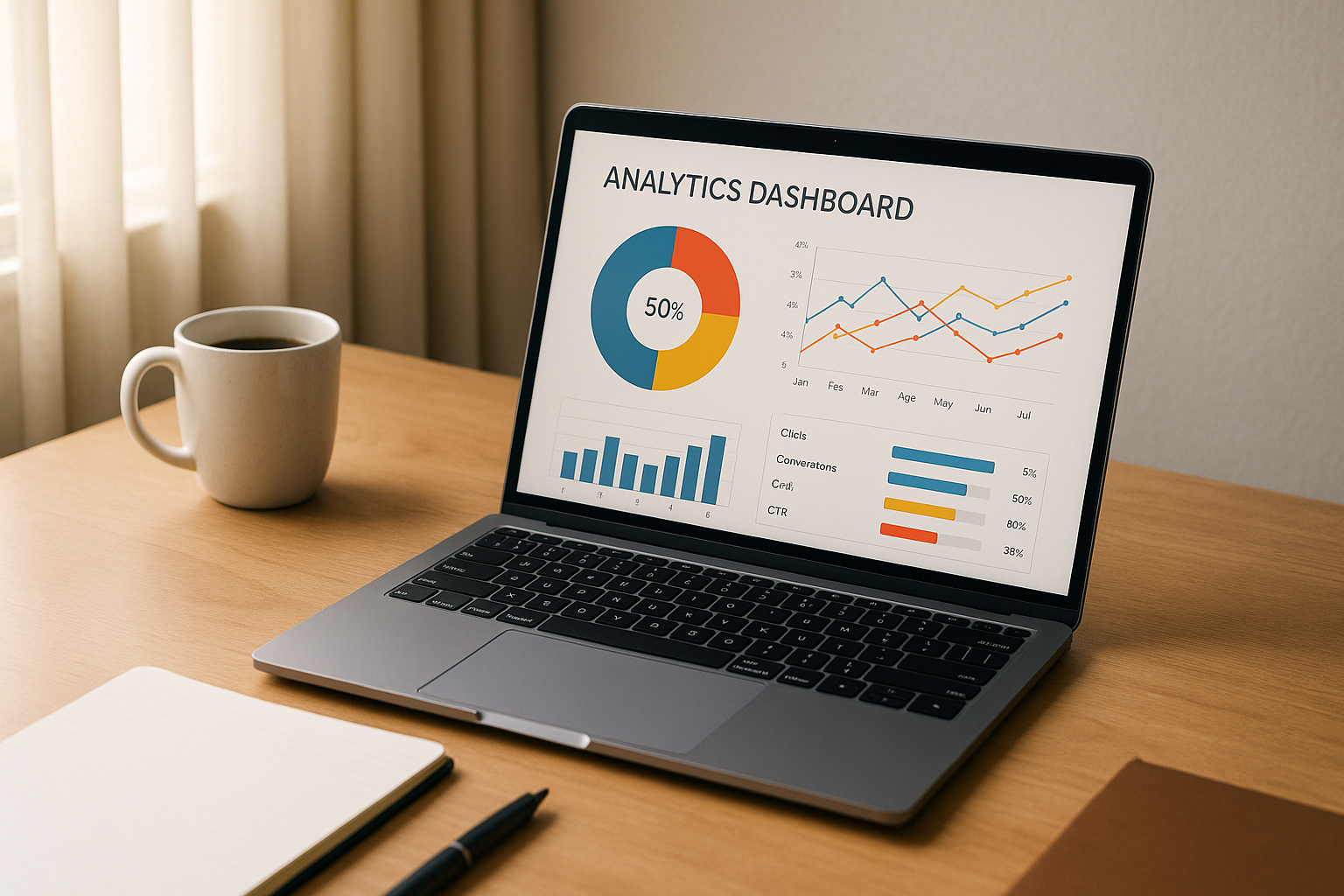Want to improve your ad performance and cut costs? Real-time bid data and APIs are the key. Here's why:
- Real-time bid data helps you adjust ad bids instantly during auctions, optimizing costs and boosting ROI.
- APIs connect your systems to ad platforms, automating bid changes and accessing live data.
- Using APIs can reduce ad spend by up to 24% and increase click-through rates by 28%.
This guide walks you through choosing the right APIs, building reliable data pipelines, and using algorithms to automate bidding. You'll also learn how machine learning can refine strategies and how tools like the Top PPC Marketing Directory simplify finding the best solutions. Start small, monitor performance, and let data drive your decisions.
Databricks Real-Time Bidding System Design and Implementation

Choosing the Right APIs for Real-Time Bid Data
Selecting the right advertising API is essential for real-time bid optimization. The wrong choice can lead to integration issues, data gaps, and missed opportunities for fine-tuning your campaigns. By understanding the strengths of different APIs, you can make informed decisions that align with your campaign's needs. Below, we’ll explore the key advertising APIs that support real-time bid data and the factors to consider when making your choice.
Overview of Key Advertising APIs
The advertising ecosystem offers several APIs, each tailored to different campaign objectives. Let’s take a closer look at some of the most prominent options:
- Facebook Marketing API: As the most widely used marketing API, it boasts usage figures that are double those of its nearest competitor. This reflects Facebook's dominance as a leading ad network.
- Google Ads API: This API is the successor to the AdWords API, offering improved functionality and performance. It supports a range of services like CampaignService, AdGroupService, AdService, ReportingService, and ConversionActionService, enabling developers to programmatically manage campaigns.
- Microsoft Advertising API: Previously known as the Bing Ads API, this option provides cost advantages. Bing’s cost-per-click is 70% lower than Google AdWords, and its ads reach 63 million users who don’t use Google.
- Amazon Ads API: This API has gained traction among eCommerce brands, thanks to its integration with shopping behavior data. It’s particularly effective for product-focused campaigns, helping advertisers target audiences with strong purchase intent.
These APIs streamline bid adjustments, enable custom reporting, and integrate with other marketing platforms. They provide insights into ad spend, conversions, and audience performance, all of which are critical for real-time optimization strategies.
Factors to Consider When Selecting APIs
Once you’re familiar with the available APIs, it’s important to evaluate them based on your specific campaign needs. Here are some key factors to keep in mind:
- Compatibility: Make sure the API integrates seamlessly with your existing tools, such as campaign management platforms, analytics software, and data warehouses.
- Data Availability: Some APIs offer detailed, impression-level data, while others provide aggregated metrics. Identify which data points - like real-time conversion tracking or audience insights - are essential for your bid strategies.
- Rate Limits: APIs impose limits on the number of data requests you can make. For frequent bid adjustments, prioritize APIs that offer generous rate limits or efficient data delivery.
- Compliance: Ensure the API adheres to privacy regulations like GDPR and CCPA, especially if your campaigns operate across multiple regions.
- Automation Features: Look for APIs with robust reporting and insights tools to support advanced optimization techniques.
Authentication and Access Setup
Securing your API integrations is just as important as selecting the right one. Reliable authentication ensures uninterrupted data flow for real-time adjustments. Most modern advertising APIs use OAuth 2.0, which is more flexible and scalable than older protocols like OAuth 1.0. To further enhance security, consider these best practices:
- Multi-Factor Authentication: Add an extra layer of protection to reduce the risk of unauthorized access.
- API Key Management: Store API keys in a secure vault instead of embedding them in your code. Rotate keys regularly and monitor access logs for unusual activity.
- Encryption: Use TLS encryption for all communications to protect data in transit.
- API Gateways: Implement gateways with rate limiting, TLS encryption, and continuous monitoring to safeguard your integrations.
Building Data Pipelines for Real-Time Bid Data
Creating efficient data pipelines to manage bid data is crucial for keeping updates timely while avoiding system overload. Let’s dive into how to collect data effectively and design pipelines that can handle the demands of real-time updates.
Polling vs. Webhooks for Data Collection
The way you collect bid data plays a big role in how responsive and efficient your pipeline is.
Polling involves regularly requesting data from advertising APIs at set intervals. This method gives you complete control over when and how data is fetched, making it straightforward but resource-intensive.
Webhooks, on the other hand, allow advertising platforms to notify your system directly when key events occur, like bid changes or campaign performance updates. Instead of repeatedly asking for data, your system gets notified the moment something happens.
Here’s a quick comparison: only 1.5% of polling requests typically yield new data. For instance, if 10,000 users are polling every 5 seconds, it results in 10,000 requests per second. In contrast, a webhook setup would only need to handle around 150 responses per second, making it significantly more efficient.
| Feature | Polling | Webhooks |
|---|---|---|
| Initiation | Client | Server |
| Data Transfer | Pull | Push |
| Real-time | No (delayed) | Yes (immediate) |
| Resource Use | High | Low |
| Complexity | Simple | Complex |
| Best Use Case | Infrequent updates, no real-time need | Real-time updates, high efficiency |
If your system can tolerate slight delays or has constraints, polling might be the better choice. But for real-time updates, webhooks are ideal, especially with a fallback polling mechanism in place.
"Polling is the process of repeatedly hitting the same endpoint looking for new data. We don't like doing this (it's wasteful), vendors don't like us doing it (again, it's wasteful), and users dislike it (they have to wait a maximum interval to trigger on new data). However, it is the one method that is ubiquitous, so we support it." - Zapier
Designing Scalable Data Pipelines
To handle growing data volumes, your pipeline’s architecture needs to be well-planned. Cloud platforms like Amazon Kinesis, Google Cloud Dataflow, and Azure Stream Analytics offer robust tools for managing large-scale bid updates efficiently.
Start by defining your data sources and ensuring your pipeline can process the expected volume without losing data. Add validation checks during data ingestion to maintain consistency and accuracy.
A modular design is key for scalability. By structuring your pipeline into separate components, you can add, remove, or upgrade parts without disrupting the whole system. For example, this makes it easier to integrate new advertising platforms or tweak bid adjustment logic without major overhauls.
To reduce latency, consider using asynchronous communication and minimize network hops. Processing data in batches instead of handling updates one by one can also reduce overhead and improve efficiency.
An event-driven architecture is another powerful approach. When an event occurs - like a bid change - it triggers downstream processes such as budget updates or performance reporting. This setup keeps components loosely connected, making the system more flexible and easier to scale.
With a scalable design in place, continuous monitoring ensures your pipeline performs consistently even as data volumes grow.
Monitoring and Ensuring Pipeline Reliability
Reliability is non-negotiable when it comes to bid data pipelines. Tools like Prometheus and Grafana are excellent for monitoring data flows and system health in real time.
Focus on key metrics such as data processing latency, throughput, and error rates. Keep an eye on API rate limits to avoid interruptions, and use clear logging with timestamps and correlation IDs to simplify troubleshooting.
Set up alerts to notify your team when performance metrics deviate from the norm. Have escalation procedures ready for persistent issues.
Data redundancy is another critical safeguard. Back up processed bid data in multiple locations and ensure you have a disaster recovery plan. The ability to replay recent data can help you recover quickly from disruptions.
Regular testing is essential. Use unit, integration, and performance tests to confirm your pipeline can handle peak loads. Incorporate CI/CD practices with automated testing and deployment to make updates - like adjusting bid algorithms or adding new data sources - seamless. A reliable pipeline ensures smooth real-time bid adjustments, supporting your broader optimization goals.
sbb-itb-89b8f36
Implementing Real-Time Bid Adjustment Algorithms
Once your data pipeline is up and running, the next step is to integrate real-time bid adjustment algorithms. This is where live data takes center stage, enabling dynamic bidding decisions that tie everything together in your strategy.
How Real-Time Data Powers Bid Adjustments
Real-time bid adjustments rely on analyzing a variety of data signals - such as device type, location, time of day, user behavior, and competitor activity - to determine the best bid for each auction. These decisions happen instantly, making the process incredibly responsive.
Here’s why this approach works so well: it allows your system to evaluate dozens of variables in the blink of an eye. For example, if your algorithm spots a user segment that’s outperforming expectations, it can immediately increase bids for that group while keeping bids lower for less promising segments. However, for this to work seamlessly, accurate conversion tracking is non-negotiable, as automated bidding depends heavily on precise data to make informed adjustments.
On top of these real-time tweaks, machine learning takes bid strategies to the next level.
Using Machine Learning for Bid Optimization
Machine learning goes beyond simple rule-based adjustments by using historical data to predict which auctions are most likely to convert.
Take the example of the Boy Scouts of America. By partnering with Scandiweb to optimize Scoutshop.org, they achieved impressive results: a 48% increase in return on ad spend (ROAS), a 49.6% drop in cost per acquisition (CPA), and doubled revenue - all within a year. This was made possible by adopting AI-driven strategies like Google's Performance Max campaigns and Target ROAS bidding, which allowed them to allocate budgets dynamically based on profit margins and seasonal demand.
Machine learning models excel at uncovering patterns that human analysis might miss. They can identify subtle connections between user behavior, seasonal trends, and conversion probabilities. These algorithms process massive amounts of data in real time, adjusting bids dynamically based on factors like keyword performance and market trends.
When using machine learning for bid optimization, patience is key. Algorithms typically need one to two weeks to optimize fully, so avoid making frequent changes that could disrupt their learning process. It’s also a good idea to separate branded and non-branded terms in your models, as their performance can differ significantly. Clear campaign goals - whether focused on conversions, revenue, or ROAS - are critical for guiding your automated bidding strategies.
| Traditional PPC Bidding | AI-Driven PPC Bidding |
|---|---|
| Relies on manual, experience-based tactics | Uses advanced machine learning algorithms |
| Limited by human data processing capacity | Handles complex data in real time |
| Offers precise control but slower adjustments | Optimizes automatically with quicker reactions |
| Requires constant manual oversight | Minimizes intervention with self-optimizing capabilities |
Legal and Ethical Considerations
Once you’ve fine-tuned your bidding strategies with real-time data and AI, it’s crucial to address the legal and ethical responsibilities that come with using user data for personalized advertising.
First and foremost, ensure compliance with data privacy regulations. This means obtaining proper user consent for data collection and processing, and making sure your privacy policies clearly explain how user data is handled. Transparency is key - users should know how their data is being used and have easy options to opt out.
For industries like healthcare, the stakes are even higher. Advertisers must comply with strict regulations to protect electronic protected health information (ePHI). For instance, the HIPAA Security Rule mandates safeguards - administrative, physical, and technical - to ensure the confidentiality and security of ePHI. Encrypting sensitive data and using secure API connections are essential steps.
Ethical considerations also play a big role. While real-time data enables precise targeting, avoid crossing the line into manipulative or discriminatory practices. Instead, focus on providing meaningful value to users. This builds trust and ensures that your strategies are aligned with both user expectations and legal requirements.
Finally, keep in mind that data privacy laws and standards are always evolving. Regularly review and update your privacy policies to stay compliant. By maintaining high ethical standards, you not only protect your users but also safeguard your business from potential legal challenges.
Using the Top PPC Marketing Directory for API Resources

When it comes to managing API-driven campaigns, having the right tools and services at your disposal is essential. The Top PPC Marketing Directory is a go-to resource for finding specialized tools that can streamline your bid management strategies, particularly when real-time adjustments are a priority. This directory supports the ongoing effort to optimize API-driven approaches for better results.
Overview of the Top PPC Marketing Directory
The Top PPC Marketing Directory is a carefully curated platform that connects businesses and marketers with top-notch PPC advertising tools, expert agencies, and services. Unlike general marketing directories, this one zeroes in on PPC tools, making it easier to discover solutions tailored for API integrations and bid management.
The directory highlights tools offering features like campaign management, bid adjustments, keyword research, ad optimization, A/B testing, retargeting, and performance tracking. This focus on PPC-specific capabilities is especially valuable for handling the complexities of real-time bid adjustments and API-driven strategies.
What makes this directory stand out is its emphasis on specialized PPC tools. Many of these tools go beyond what all-in-one marketing platforms provide, offering advanced features designed to meet the technical demands of API integrations and real-time data processing.
Key Features and Benefits
The directory is designed to empower API-driven campaigns by helping you filter tools based on their API capabilities. Whether you need real-time performance analysis, bid visibility, or automated bidding, the directory simplifies the process of finding solutions that integrate seamlessly with your data systems.
Here’s what these tools typically offer:
- Custom APIs: Essential for gathering real-time bid data, accessing performance metrics, and tracking conversions.
- Automation: Simplifies repetitive tasks like bid adjustments, keyword research, and performance tracking.
- Competitive Insights: APIs often include insights into competitor performance, feeding directly into your bid adjustment algorithms.
| Directory Feature | Benefit for API Integration |
|---|---|
| Bid Management Tools | Access platforms with APIs for real-time bid adjustments |
| Performance Tracking Solutions | Detailed metrics available via API endpoints |
| Campaign Management Platforms | APIs for managing multiple data sources |
How to Use the Directory Effectively
Using the directory strategically can save time and effort when searching for tools that meet your integration needs. Begin by identifying what you’re looking for - whether it’s compatibility with Google Ads, Amazon Advertising, or multiple platforms. The directory allows you to compare tools and services to find the best fit for your campaign goals.
When evaluating options, pay close attention to API documentation and support resources. Features like automated data pipelines, centralized dashboards, and predictive insights are indicators that the tool can handle the demands of real-time bid adjustments. These capabilities are vital for maximizing ad performance.
The directory also simplifies the process of comparing platforms based on ease of integration, data availability, and real-time processing capabilities. This centralized approach eliminates the need for extensive research across multiple sources.
For instance, tools that integrate seamlessly with the Amazon Advertising API can help you automate and scale campaigns. This includes tasks like adjusting bids, modifying budgets, and accessing real-time performance data. By focusing on platforms with proven integration capabilities, you can ensure your campaigns run efficiently and effectively.
Conclusion
Key Takeaways
Accessing real-time bid data through APIs allows marketers to make instant, automated adjustments, which can reduce ad spend by up to 24% and increase click-through rates by 28%. Achieving this level of precision and efficiency is nearly impossible with manual bid management alone.
To integrate APIs successfully, it's essential to choose the right tools and establish reliable data pipelines. Key considerations when selecting APIs include authentication methods, available endpoints, error handling, and filtering options. These elements are critical for implementing real-time bid adjustments effectively.
The Top PPC Marketing Directory is an excellent resource for finding tools tailored to API-driven campaigns. By offering a curated selection of platforms, it simplifies the process of identifying solutions with strong API capabilities, custom integration options, and automation features necessary for optimizing bids in real time. These insights underline the importance of selecting the right APIs and maintaining dependable data pipelines.
Additionally, AI-powered bidding strategies can increase conversions by 25% while cutting overall ad spend by 15%. Applying these principles can help refine your advertising strategy and drive ongoing improvements.
Next Steps for Marketers
To put these insights into action, focus on practical steps to improve your campaigns. Start by implementing API-driven bid optimization with a clear plan in place. Define specific campaign goals to align automated bidding strategies with your desired outcomes, and ensure your conversion tracking is accurate - automated bidding depends heavily on this data. Allow machine learning models a week or two to optimize performance.
Begin by analyzing your current campaigns to identify strengths and areas that need improvement. Prepare your historical data to ensure accurate tracking before introducing new strategies. If coding isn't your strong suit, consider platforms like Coupler.io, which offers over 60 pre-built API connectors to simplify data integration without requiring technical expertise.
Start small by testing API integrations and bid adjustment algorithms on a subset of your campaigns. This approach minimizes risk while allowing you to validate performance before scaling up. Establish robust monitoring systems to track key performance metrics and identify opportunities for further optimization.
The Top PPC Marketing Directory can help streamline your search for the right tools by offering comparisons of platforms based on API documentation, ease of integration, and real-time processing capabilities. Look for solutions that provide custom APIs, automation features, and competitive insights to enhance your bid adjustment algorithms. Remember, implementation is an ongoing process that requires regular reviews and adjustments based on performance data and market trends. Programmatic campaigns, when executed well, can deliver 20–30% higher efficiency compared to traditional methods.
FAQs
How can I make sure the API I choose for real-time bid data works with my current tools and systems?
To make sure the API you choose for real-time bid data works seamlessly with your current tools, prioritize ones that rely on standard protocols like REST or SOAP. These are commonly supported across most PPC platforms, making integration much easier. Also, consider whether the API offers features such as webhooks or data export capabilities that fit into your existing workflows.
Don’t overlook the API’s ability to manage your data requirements. This includes handling the volume and update frequency necessary for bid adjustments. Take a close look at its scalability and latency specs to confirm it can deliver the performance you need. A smart move is to test the API in a controlled setting first to ensure it’s compatible before rolling it out fully.
What are the benefits of using webhooks instead of polling for real-time bid data, and when should you choose one over the other?
Webhooks and polling are two popular methods for gathering real-time bid data, but they work in distinct ways. Webhooks operate on an event-driven system, meaning they only send data when a specific event occurs. This approach reduces unnecessary API calls, making it an efficient choice for scenarios where quick updates and minimal latency are essential - like adjusting bids dynamically in PPC campaigns.
In contrast, polling relies on checking for updates at regular intervals. This method works well when updates are less frequent or timing isn’t as critical. If you need instant notifications, webhooks are the way to go. However, if you prefer a simpler setup or want to manage how often data is requested, polling might be the better option.
How can I use machine learning to improve real-time bid adjustments in my PPC campaigns?
Machine learning has the power to transform how real-time bid adjustments work in PPC campaigns. By processing massive amounts of data and automating bidding decisions, it can help streamline processes, make better use of your ad budget, and ultimately boost your ROI.
To make the most of machine learning, start by integrating AI-driven tools that track performance metrics and adjust bids based on live data. Dive deeper into audience targeting by leveraging behavioral insights, and don’t forget to regularly test and refine your ad creatives. By cutting down on manual tasks and embracing automation, you can unlock the full potential of your PPC campaigns.


